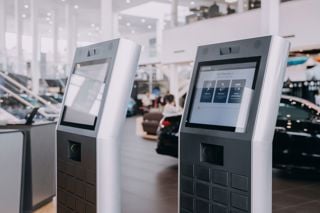Digitisation is transforming the way the automotive industry works like never before. OEMs are leading the charge with the implementation of innovative new digital platforms and the appointment of dedicated chief digital officers.
But companies need to go much further by tapping the unrealised revenue potential for data services. In order to do so, however, they must first develop a clear data strategy and digital key performance indicators.
Those were the key findings from a panel at Frost & Sullivan’s Intelligent Mobility event held in London last Wednesday.
“The industry has moved on now from defining digitisation to the implementation stage,” said Julia Saini, vice president, mobility, global aftersales and retail at Frost & Sullivan.
“Most OEMs now have a chief digital officer and associated department as standard.
“But there’s also significant revenue potential for data services downstream to the point where they really need to have a clear data strategy, as well as digital KPIs for each part of the business going forward.”
 Saini (pictured left) said the five main areas that will reshape the industry are a connected supply chain, industry 4.0, connected and automated vehicles, digital retailing and VRM, and mobility as a service.
Saini (pictured left) said the five main areas that will reshape the industry are a connected supply chain, industry 4.0, connected and automated vehicles, digital retailing and VRM, and mobility as a service.
She said that market leaders such as BMW and Volkswagen have already integrated these factors into their workstreams.
“What Volkswagen and BMW have in common is a centricity around the whole concept of the digital customer experience,” she said.
“In this way, digitisation going forward will enable OEMs to really understand who their customer is and the specific service they require.”
Saini said that some OEMs have partnered with IT companies to provide such customer platforms. By doing so, she said that they are able to capture all of the customer’s data including their personal details and driving preferences, enabling them to manage their entire journey more effectively and to potentially sell more services.
“One of the major growth areas is around the user based insurance model,” she said.
“The car itself is now able to collect information from a host of data points and we expect companies to offer more user based insurances determined by factors such as how, when and where they drive to.”
Saini added that companies also need to establish digital KPIs across the value chain focused on the customer.
That includes the optimisation of analogue processes that are moved over to digital ones as well as completely new processes, she said.
“Every function needs to have its own set of customer focused digital KPIs,” she said. “That includes the leadership team who, thanks to vehicle analytics, have greater access to customer data than ever before.”
Michael Tworek, industry vice president – automotive and smart mobility at Forgerock, said that the industry needs to provide the customer with a seamless digital experience.
That starts with the digital recognition of the driver using a smart key through to doing everything from shopping and checking emails while on the move, he said.
“All of this may sound like science fiction, but it’s happening now,” he said. “The problem is that all of the adjacent services such as connectivity, payment and insurance are siloed, so the different providers need to work collaboratively in order to help deliver a more streamlined service.”
Allison Nau (pictured below), managing director of Cox Automotive Data Solutions, said that from a dealer perspective, they need to focus on three key areas to improve the customer journey: communication and education, actionable insight and operational capabilities.
 This includes internal communications and education about data and how to use it, and external education and thought leadership teaching the benefits of using information, she said.
This includes internal communications and education about data and how to use it, and external education and thought leadership teaching the benefits of using information, she said.
“It all starts with how we use data for decision making,” she said.
“That’s what will ultimately determine how we drive digital transformation.”
By Alex Wright


















Login to comment
Comments
No comments have been made yet.